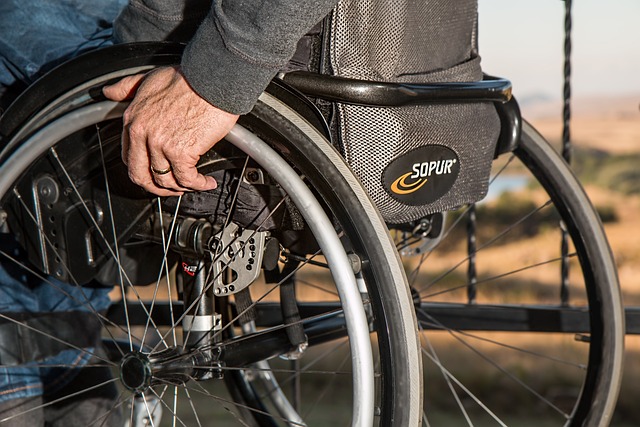Complete Guide to Medicare Coverage for Mobility Scooters
Understanding Medicare coverage for mobility scooters can help you access the mobility equipment you need while managing costs effectively. Medicare Part B may cover a portion of scooter expenses when specific medical criteria are met, but navigating the approval process requires knowledge of eligibility requirements, documentation needs, and coverage limitations. This guide explains how Medicare handles mobility scooter coverage, what you need to qualify, and what out-of-pocket costs you might expect.

Mobility scooters provide essential independence for individuals with limited mobility, but understanding how Medicare covers these devices can be complex. Medicare Part B classifies mobility scooters as durable medical equipment (DME) and may cover them when medically necessary. However, coverage depends on meeting strict criteria, obtaining proper documentation, and working with approved suppliers.
How Does Medicare Coverage Work for Mobility Scooters?
Medicare Part B covers mobility scooters when they are deemed medically necessary for use inside your home. To qualify, your doctor must document that you have a mobility-limiting condition that prevents you from performing daily activities within your residence. The scooter must be prescribed as part of your treatment plan, and you must demonstrate that you cannot use a manual wheelchair effectively. Medicare typically covers 80 percent of the approved amount after you meet your Part B deductible, leaving you responsible for the remaining 20 percent plus any additional costs beyond the approved amount.
What Medical Criteria Must You Meet for Medicare Coverage?
Medicare requires substantial medical documentation to approve mobility scooter coverage. Your healthcare provider must conduct a face-to-face examination and create a detailed written order explaining why a scooter is necessary for your condition. Qualifying conditions often include severe arthritis, neurological disorders, cardiovascular conditions, or other impairments that significantly limit walking ability. You must demonstrate that you can safely operate the scooter and that using it will significantly improve your ability to perform daily activities. Additionally, your home environment must accommodate scooter use, as Medicare only covers devices for indoor home use rather than solely for outdoor mobility or convenience.
Which Types of Mobility Scooters Does Medicare Cover in the USA?
Medicare categorizes mobility scooters as power-operated vehicles (POVs) and distinguishes them from power wheelchairs. Generally, Medicare covers standard mobility scooters designed for indoor use, typically three-wheel or four-wheel models with basic functionality. The coverage focuses on medically necessary features rather than luxury or convenience options. Heavy-duty scooters, travel scooters, or models with advanced features may not receive full coverage unless specifically justified by medical necessity. Your doctor’s prescription must specify the type of scooter required based on your medical condition, weight, home layout, and functional needs. Medicare-approved suppliers must provide the equipment, and using non-approved vendors may result in denied claims.
What Documentation Do You Need for Medicare Scooter Approval?
Successful Medicare approval requires comprehensive documentation from your healthcare provider. Your doctor must complete a Certificate of Medical Necessity (CMN) form, also known as a Written Order Prior to Delivery, detailing your diagnosis, mobility limitations, and why a scooter is medically appropriate. This documentation should include results from your face-to-face examination, evidence that you have tried and failed with less costly mobility aids, and confirmation that you can safely operate a scooter. Your medical records must support the claim that limited mobility significantly impacts your ability to perform activities of daily living within your home. Incomplete or insufficient documentation is the most common reason for Medicare denial, so working closely with your healthcare provider to ensure thorough paperwork is essential.
How Much Does Medicare Coverage Cost for Scooters in the US?
Understanding the financial aspects of Medicare scooter coverage helps you plan for out-of-pocket expenses. After meeting your annual Part B deductible, Medicare typically covers 80 percent of the approved amount for a medically necessary mobility scooter. You remain responsible for the remaining 20 percent coinsurance. The approved amount varies based on the specific scooter model and your geographic location, but standard mobility scooters generally have Medicare-approved amounts ranging from $800 to $2,000. This means your out-of-pocket costs could range from $160 to $400 after meeting your deductible, though actual costs depend on the specific equipment and supplier pricing.
| Coverage Component | Medicare Part B | Your Responsibility |
|---|---|---|
| Annual Deductible | Not Covered | $240 (2024 amount) |
| Approved Scooter Amount | 80% Coverage | 20% Coinsurance |
| Standard Scooter Range | $640-$1,600 covered | $160-$400 typical |
| Supplier Excess Charges | Not Covered | Variable |
Prices, rates, or cost estimates mentioned in this article are based on the latest available information but may change over time. Independent research is advised before making financial decisions.
If you have a Medicare Supplement (Medigap) policy, it may cover some or all of your 20 percent coinsurance, reducing your out-of-pocket costs. Medicare Advantage plans (Part C) must provide at least the same coverage as Original Medicare but may have different cost-sharing structures, so reviewing your specific plan details is important.
What Steps Should You Take to Obtain Medicare Coverage?
Navigating the Medicare approval process requires following specific steps in the correct order. First, schedule a comprehensive evaluation with your doctor to discuss your mobility limitations and whether a scooter is medically appropriate. Your doctor must conduct a face-to-face examination and document your condition thoroughly. Next, ensure your doctor completes all required paperwork, including the Certificate of Medical Necessity, with detailed justification for the scooter. Choose a Medicare-approved DME supplier in your area, as using non-approved suppliers will result in denied coverage. Submit all documentation to Medicare through your supplier, who typically handles the claims process. Be prepared for potential delays or requests for additional information, as Medicare carefully reviews scooter claims. If your claim is denied, you have the right to appeal the decision with additional supporting documentation from your healthcare provider.
Conclusion
Medicare coverage for mobility scooters provides valuable assistance for individuals with significant mobility limitations, but obtaining approval requires meeting strict medical criteria and providing comprehensive documentation. Understanding the coverage process, eligibility requirements, cost-sharing responsibilities, and necessary steps can help you successfully navigate the system. Working closely with your healthcare provider and choosing Medicare-approved suppliers increases your chances of approval while managing out-of-pocket expenses effectively. While the process may seem complex, the independence and improved quality of life that mobility scooters provide make pursuing Medicare coverage worthwhile for those who qualify.




